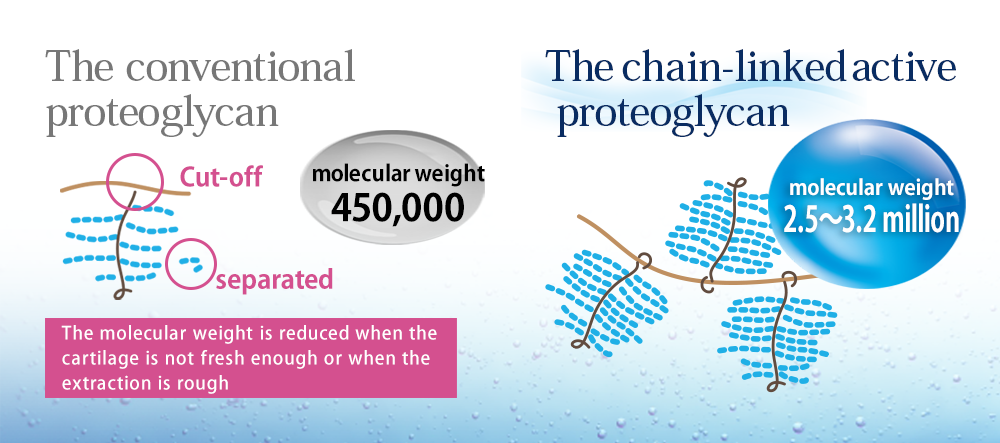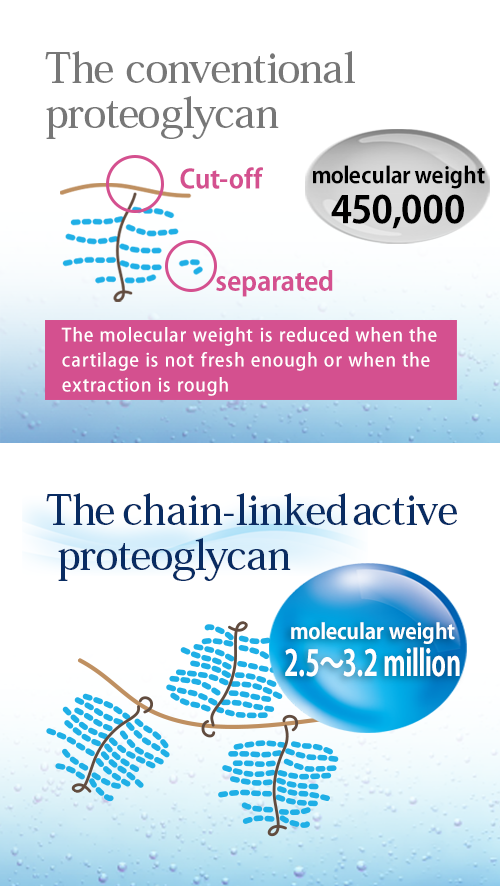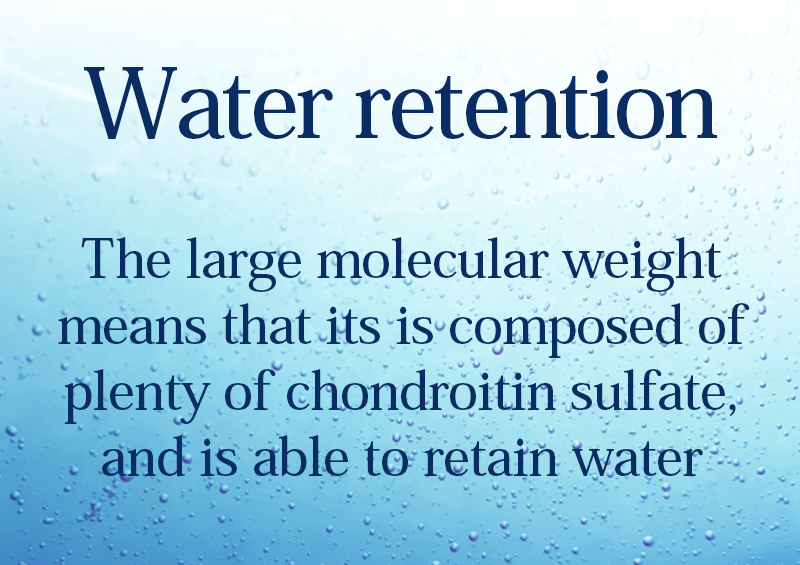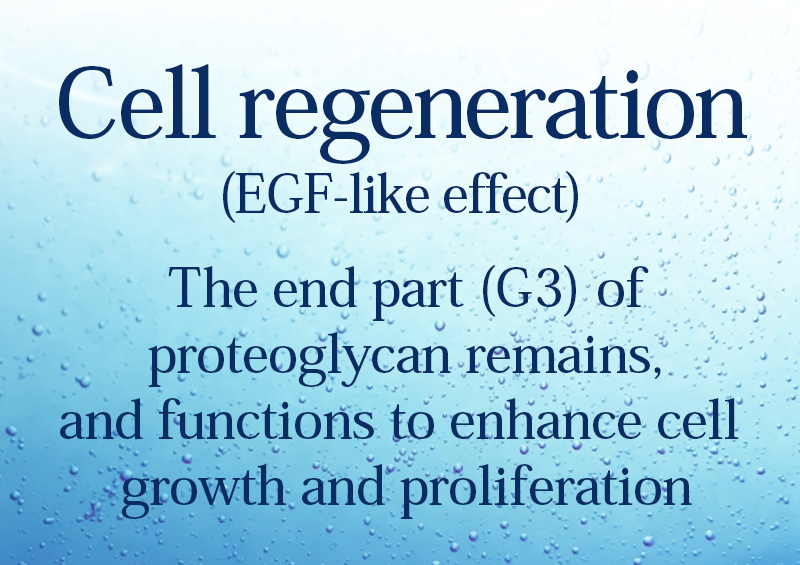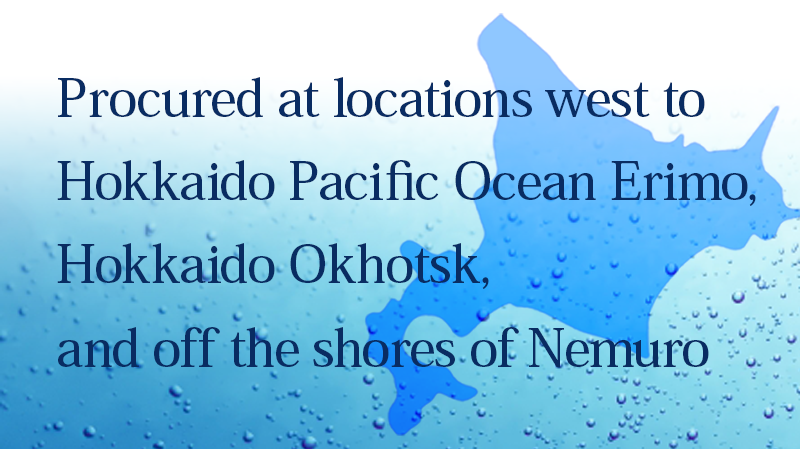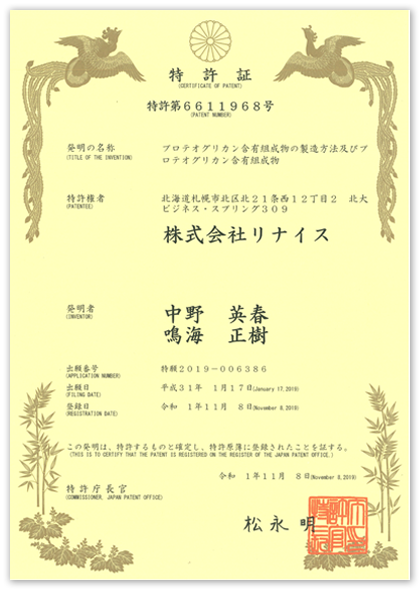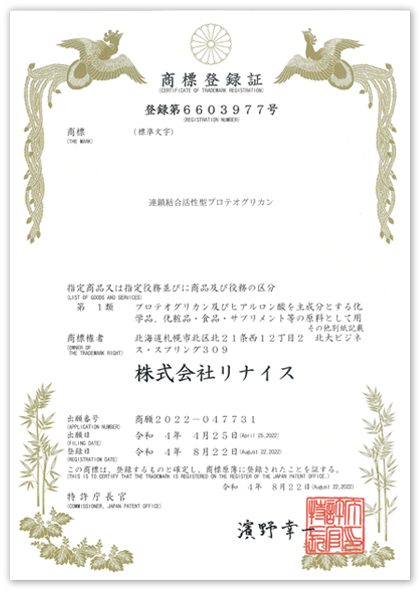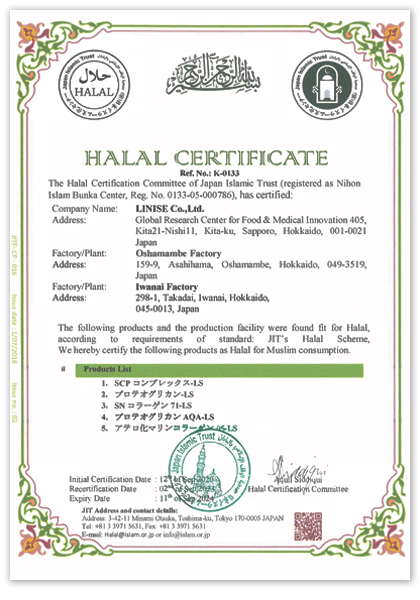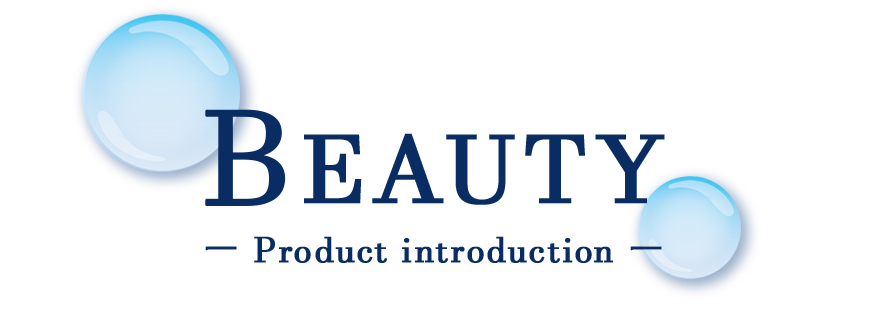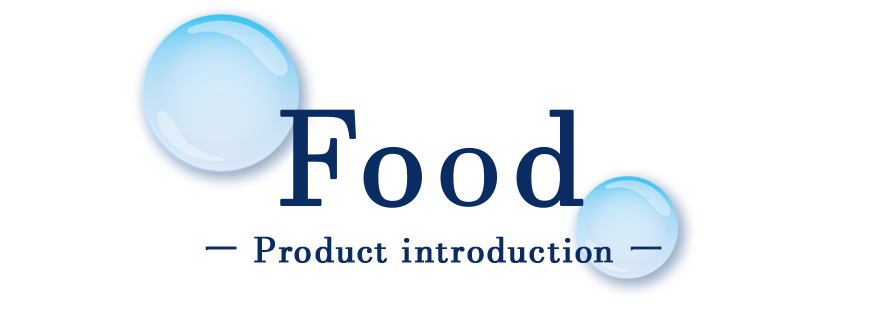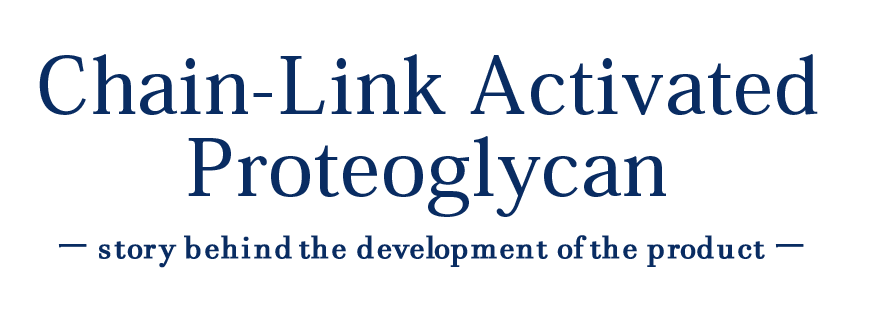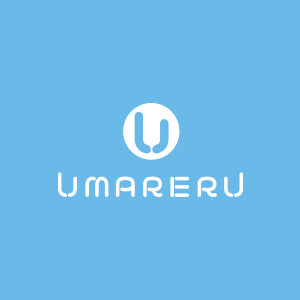At UMARERU Inc. ,we handle mainly the chain bond activated proteoglycans from Rinais Co., Ltd., which manufactures functional raw materials in Hokkaido.
Chain-linked proteoglycan points to a type of proteoglycan extracted as a complex molecule (non-broken hyaluronic acid chain) , compose of 2 to 3 proteoglycans bonded together using a patented manufacturing method.
Due to its large molecular weight (2 to 3 times the usual weight), chainlinked activated proteoglycan is anticipated to yield a high barrier moisturizing function. In addition, by promoting the regeneration of epidermal keratinocytes, proteoglycans is expected to bring significant skin improvement at the cellular level, to its original beauty effects, including EGF-like effects, promotion of fibroblast proliferation, and wrinkle-improvements. It beholds great promise and is attracting attention as a next-generation beauty and health product.







